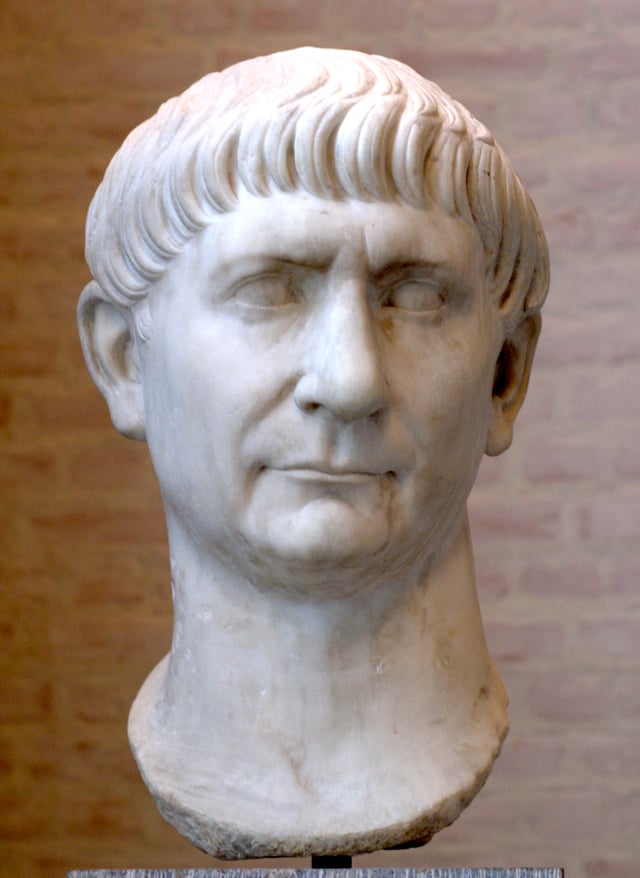Spaniards
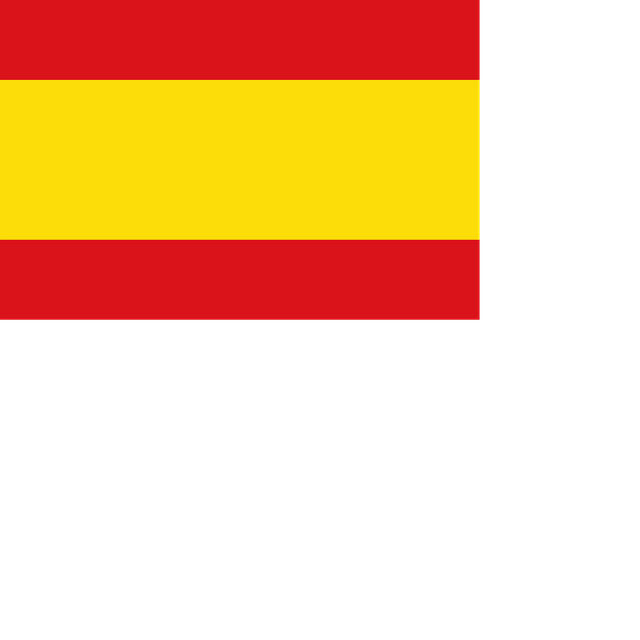
Spaniards

| Total population | |
|---|---|
| Spain nationals 41,539,400[3](for a total population of 47,059,533)Hundreds of millions of Latin Americans of full or partial Spanish ancestry[4][5][6][7][8][9]Nationals abroad : 2,183,043[10]Totalabroad:2,183,043,[10]which of them:733,387are born in Spain1,303,043are born in the country of residence137,391others[10] | |
| Regions with significant populations | |
| Spain41,539,400[3] | |
| Diaspora | |
| Argentina | 404,111 (92,610 born inSpain)[10][13][13] |
| France | 215,183 (124,153 born inSpain)[10][13] |
| Venezuela | 188,585 (56,167 born inSpain)[10][13] |
| Germany | 146,846 (61,881 born inSpain)[13][14][15] |
| 117,523 (29,848 born inSpain)[10][13] | |
| 108,858 (2,114 born inSpain)[10][13] | |
| 108,314 (17,485 born inSpain)[10][13] | |
| United States(includingPuerto Rico) | 103,474 (48,546 born inSpain)[10][13] |
| Switzerland | 103,247 (48,546 born inSpain)[10][13] |
| 81,519 (54,418 born inSpain)[10][13] | |
| 63,827 (12,023 born inSpain)[10][13] | |
| 56,104 (9,669 born inSpain)[10][13] | |
| 53,212 (26,616 born inSpain)[16] | |
| 30,683 (8,057 born inSpain)[10][13] | |
| 24,485 (17,771 born inSpain)[10][13] | |
| 21,974 (12,406 born inSpain)[10][13] | |
| 20,898 (11,734 born inSpain)[10][13] | |
| 19,668 (4,028 born inSpain)[10][13] | |
| 18,928 (3,622 born inSpain)[13][16] | |
| 18,353 (10,506 born inSpain)[10][13] | |
| 16,482[17] | |
| 15,390[18] | |
| 12,375[17] | |
| 12,000[19] | |
| 9,311[20] | |
| Morocco | 8,003[13] |
| 6,794[21] | |
| 3,110[22] | |
| 2,500[23] | |
| 2,450[17] | |
| 2,118–45,935[13][24] | |
| 1,826[25] | |
| 1,489[13] | |
| 1,283[13] | |
| 1,007[13] | |
| Languages | |
| Spanish | |
| Religion | |
| Catholic Christianity][2] | |
| Related ethnic groups | |
| White Hispanic Americans,Mestizos,Portuguese,Occitans,Italians,Maghrebis,Germanic peoples,Celtic peoples,Arabs,Sephardim,Greeks | |
Spaniards [1] are a Romance[29][30] nation and ethnic group native to Spain. Within Spain, there are a number of nationalisms and regionalisms, reflecting the country's complex history and diverse culture. Although the official language of Spain is commonly known as "Spanish", it is only one of the national languages of Spain, and is less ambiguously known as Castilian, a standard language based on the medieval romance speech of the Kingdom of Castile in north and central Spain. Historically, the Spanish people's heritage includes the pre-Celts and Celts (Celtiberians, Lusitanians, Gallaecians, Oestriminis, Turduli and Celtici).
There are several commonly spoken regional languages, most notably Basque (a Paleohispanic language), Catalan and Galician (both Romance languages like Castilian). There are many populations outside Spain with ancestors who emigrated from Spain and who share a Hispanic culture; most notably in Hispanic America.
The Roman Republic conquered Iberia during the 2nd and 1st centuries BC. As a result of Roman colonization, the majority of local languages, with the exception of Basque, stem from the Vulgar Latin. The Germanic Vandals and Suebi, with part of the Iranian Alans under King Respendial conquered the peninsula in 409 AD.[31] In turn, the Visigoths established themselves in Spain, founding the Visigothic Kingdom. The Iberian Peninsula was conquered and brought under the rule of the Arab Umayyads in 711 and by the Berber North African dynasties the Almohads and the Almoravids in the 11th and 12th centuries. Following the eight century Christian Reconquista against the Moors, the modern Spanish state was formed with the union of the Kingdoms of Castille and Aragon, the conquest of the last Muslim Nasrid Kingdom of Granada and the Canary Islands in the late 15th century. In the early 16th century the Kingdom of Navarre was also conquered. As Spain expanded its empire in the Americas, religious minorities in Spain such as Jews and Muslims were either converted or expelled and the Catholic church persecuted heresy by means of the Spanish Inquisition. A small number of Spaniards descend from converted Jewish and North Africans,[32] as a result of the 800 years of Moorish occupation of the Iberian Peninsula.[33][34]
In parallel, a wave of emigration to the Americas began, with over 1.86 million Spaniards emigrating to the Spanish Americas during the colonial period (1492-1824) and the population of the Spanish Empire had risen to 16.8 million by the end of the 18th century[35] In the post-colonial period (1850–1950), a further 3.5 million Spanish left for the Americas, particularly Argentina, Uruguay, Mexico,[36] Brazil, Chile, Venezuela, Puerto Rico and Cuba.[37]
Spain is home to one of the largest communities of Romani people (commonly known by the English exonym "gypsies", Spanish: gitanos). The Government's statistical agency CIS estimated in 2007 that the number of Gitanos present in Spain is probably around one million.[38] The Spanish Roma, which belong to the Iberian Kale subgroup (calé), are a formerly-nomadic community, which spread across Western Asia, North Africa, and Europe, first reaching Spain in the 15th century. The population of Spain is becoming increasingly diverse due to recent immigration. From 2000 to 2010, Spain had among the highest per capita immigration rates in the world and the second highest absolute net migration in the World (after the United States)[39] and immigrants now make up about 10% of the population. Nevertheless, the prolonged economic crisis between 2008 and 2015 significantly reduced both immigration rates and the total number of foreigners in the country, Spain becoming once more a net emigrant country.
| Total population | |
|---|---|
| Spain nationals 41,539,400[3](for a total population of 47,059,533)Hundreds of millions of Latin Americans of full or partial Spanish ancestry[4][5][6][7][8][9]Nationals abroad : 2,183,043[10]Totalabroad:2,183,043,[10]which of them:733,387are born in Spain1,303,043are born in the country of residence137,391others[10] | |
| Regions with significant populations | |
| Spain41,539,400[3] | |
| Diaspora | |
| Argentina | 404,111 (92,610 born inSpain)[10][13][13] |
| France | 215,183 (124,153 born inSpain)[10][13] |
| Venezuela | 188,585 (56,167 born inSpain)[10][13] |
| Germany | 146,846 (61,881 born inSpain)[13][14][15] |
| 117,523 (29,848 born inSpain)[10][13] | |
| 108,858 (2,114 born inSpain)[10][13] | |
| 108,314 (17,485 born inSpain)[10][13] | |
| United States(includingPuerto Rico) | 103,474 (48,546 born inSpain)[10][13] |
| Switzerland | 103,247 (48,546 born inSpain)[10][13] |
| 81,519 (54,418 born inSpain)[10][13] | |
| 63,827 (12,023 born inSpain)[10][13] | |
| 56,104 (9,669 born inSpain)[10][13] | |
| 53,212 (26,616 born inSpain)[16] | |
| 30,683 (8,057 born inSpain)[10][13] | |
| 24,485 (17,771 born inSpain)[10][13] | |
| 21,974 (12,406 born inSpain)[10][13] | |
| 20,898 (11,734 born inSpain)[10][13] | |
| 19,668 (4,028 born inSpain)[10][13] | |
| 18,928 (3,622 born inSpain)[13][16] | |
| 18,353 (10,506 born inSpain)[10][13] | |
| 16,482[17] | |
| 15,390[18] | |
| 12,375[17] | |
| 12,000[19] | |
| 9,311[20] | |
| Morocco | 8,003[13] |
| 6,794[21] | |
| 3,110[22] | |
| 2,500[23] | |
| 2,450[17] | |
| 2,118–45,935[13][24] | |
| 1,826[25] | |
| 1,489[13] | |
| 1,283[13] | |
| 1,007[13] | |
| Languages | |
| Spanish | |
| Religion | |
| Catholic Christianity][2] | |
| Related ethnic groups | |
| White Hispanic Americans,Mestizos,Portuguese,Occitans,Italians,Maghrebis,Germanic peoples,Celtic peoples,Arabs,Sephardim,Greeks | |
Historical background
Early populations
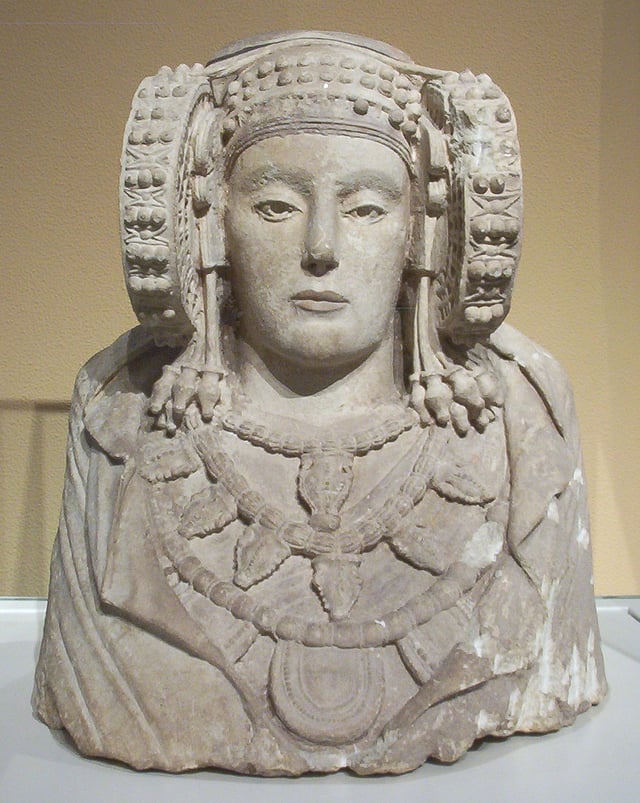
Lady of Elche, a piece of Iberian sculpture from the 4th century BC
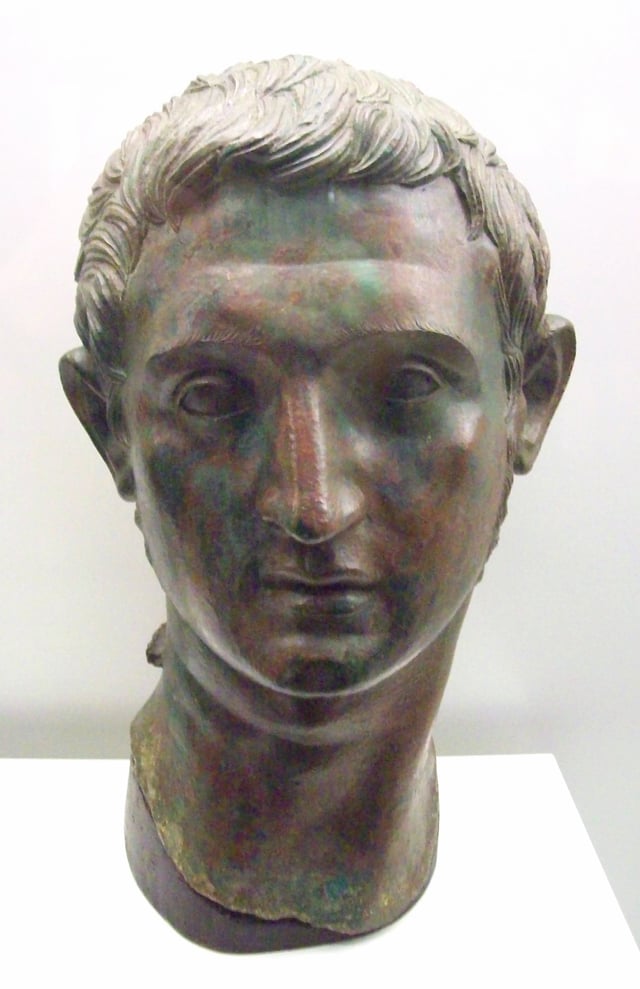
A young Hispano-Roman nobleman from the 1st century BC
The earliest modern humans inhabiting Spain are believed to have been Neolithic peoples who may have arrived in the Iberian Peninsula as early as 35,000–40,000 years ago.
In more recent times the Iberians are believed to have arrived or developed in the region between the 4th millennium BC and the 3rd millennium BC, initially settling along the Mediterranean coast. Celts settled in Spain during the Iron Age. Some of those tribes in North-central Spain, which had cultural contact with the Iberians, are called Celtiberians. In addition, a group known as the Tartessians and later Turdetanians inhabited southwestern Spain and who are believed to have developed a separate civilization of Phoenician influence. The seafaring Phoenicians, Greeks, and Carthaginians successively founded trading colonies along the Mediterranean coast over a period of several centuries. The Second Punic War between the Carthaginians and Romans was fought mainly in what is now Spain and Portugal.[40]
The Roman Republic conquered Iberia during the 2nd and 1st centuries BC transformed most of the region into a series of Latin-speaking provinces. As a result of Roman colonization, the majority of local languages, with the exception of Basque, stem from the Vulgar Latin that was spoken in Hispania (Roman Iberia), which evolved into the modern languages of the Iberian Peninsula, including Castilian, which became the main lingua franca of Spain, and is now known in most countries as Spanish. Hispania emerged as an important part of the Roman Empire and produced notable historical figures such as Trajan, Hadrian, Seneca and Quintilian.
The Germanic Vandals and Suebi, with part of the Iranian Alans under King Respendial, arrived in the peninsula in 409 AD. Part of the Vandals with the remaining Alans, now under Geiseric in personal union removed themselves to North Africa after a few conflicts with another Germanic tribe, the Visigoths, who established in Toulouse supported Roman campaigns against the Vandals and Alans in 415–19 AD and became the dominant power in Iberia for three centuries. The Visigoths were highly romanized in the eastern Empire and already Christians, so their integration within the late Iberian-Roman culture was full; they accepted the laws and structures of the late Roman World with little change, more than any other successor barbarian state in the West after the Ostrogoths, and all the more so after converting away from Arianism. The other Germanic tribe remaining in the peninsula, the Suebi (including the Buri), became established according to sources as federates of the Roman Empire in the old North western Roman province of Gallaecia, but in fact largely independent and predatory on neighboring provinces to stretch their political control over ever-larger portions of the southwest after the Vandals and Alans left, creating a totally independent Suebic Kingdom. After being checked and reduced in 456 AD by the Visigoths moving to settle in the peninsula, it survived until 585 AD, when it was annihilated as an independent political unit by the Visigoths, after involvement in the internal affairs of the kingdom, supporting Catholic rebellions and sedition within the Royal family. The Suebi became the first Germanic kingdom to convert officially to Roman Catholicism in 447 AD. under king Rechiar.
Middle Ages
After two centuries of domination by the Visigothic Kingdom, the Iberian Peninsula was invaded by a Muslim force under Tariq Bin Ziyad in 711. This army consisted mainly ethnic Berbers from the Ghomara tribe, which were reinforced by Arabs from Syria once the conquest was complete. The Visigothic Kingdom which to that point controlled the entire peninsula totally collapsed and the entire peninsula was conquered except for a remote mountainous area in the far north which would eventually become the Christian Kingdom of Asturias. Muslim Iberia became part of the Umayyad Caliphate and would be known as Al-Andalus. The Berbers of Al Andalus revolted as early as 740 AD, halting Arab expansion across the Pyrenees into France. Upon the collapse of the Umayyad in Damascus, Spain was seized by Yusuf al Fihri, until the arrival of exiled Umayyad Prince Abd al-Rahman I, who seized power, establishing himself as Emir of Cordoba. Abd al Rahman III, his grandson, proclaimed a Caliphate in 929, marking the beginning of the Golden Age of Al Andalus, a polity which was the effective power of the peninsula and even Western North Africa, competing with the Shiite rulers of Tunis and constantly raiding the small Christian Kingdoms in the North.
The Caliphate of Córdoba effectively collapsed during a ruinous civil war between 1009 and 1013, although it was not finally abolished until 1031 when al-Andalus broke up into a number of mostly independent mini-states and principalities called taifas. These were generally too weak to defend themselves against repeated raids and demands for tribute from the Christian states to the north and west, which were known to the Muslims as "the Galician nations",[16] and which had spread from their initial strongholds in Galicia, Asturias, Cantabria, the Basque country, and the Carolingian Marca Hispanica to become the Kingdoms of Navarre, León, Portugal, Castile and Aragon, and the County of Barcelona. Eventually raids turned into conquests, and in response the Taifa kings were forced to request help from the Almoravids, Muslim Berber rulers of the Maghreb. Their desperate maneuver would eventually fall to their disadvantage, however, as the Almoravids they had summoned from the south went on to conquer and annex all the Taifa kingdoms.
In 1086 the Almoravid ruler of Morocco, Yusuf ibn Tashfin, was invited by the Muslim princes in Iberia to defend them against Alfonso VI, King of Castile and León.
In that year, Tashfin crossed the straits to Algeciras and inflicted a severe defeat on the Christians at the Battle of Sagrajas.
By 1094, Yusuf ibn Tashfin had removed all Muslim princes in Iberia and had annexed their states, except for the one at Zaragoza.
He also regained Valencia from the Christians.
About this time a massive process of conversion to Islam took place, Muslims comprising the majority of the population Spain the 11th century.
The Almoravids were succeeded by the Almohads, another Berber dynasty, after the victory of Abu Yusuf Ya'qub al-Mansur over the Castilian Alfonso VIII at the Battle of Alarcos in 1195.
In 1212 a coalition of Christian kings under the leadership of the Castilian Alfonso VIII defeated the Almohads at the Battle of Las Navas de Tolosa.
The Almohads continued to rule Al-Andalus for another decade, though with much reduced power and prestige.
The civil wars following the death of Abu Ya'qub Yusuf II rapidly led to the re-establishment of taifas.
The taifas, newly independent but now weakened, were quickly conquered by Portugal, Castile, and Aragon.
After the fall of Murcia (1243) and the Algarve (1249), only the Emirate of Granada survived as a Muslim state, and only as a tributary of Castile until 1492.
In 1469 the marriage of Ferdinand of Aragon and Isabella of Castile signaled the launch of the final assault on the Emirate of Granada.
The King and Queen convinced the Pope to declare their war a crusade.
The Christians crushed one center of resistance after another and finally, in January 1492, after a long siege, the Moorish sultan Muhammad XII surrendered the fortress palace, the renowned Alhambra.
The Canary Islands were conquered between 1402 and 1496 and their indigenous Berber populations, the Guanches, were gradually absorbed by Spanish settlers.
Spanish conquest of the Iberian part of Navarre was commenced by Ferdinand II of Aragon and completed by Charles V in a series of military campaigns extending from 1512 to 1524, while the war lasted until 1528 in the Navarre to the north of the Pyrenees.
Between 1568-1571, Charles V armies fought and defeated a general insurrection of the Muslims of the mountains of Granada, after which he ordered the dispersal of up to 80,000 Granadans throughout Spain.
The union of the Christian kingdoms of Castile and Aragon as well as the conquest of Granada, Navarre and the Canary Islands led to the formation of the Spanish state as known today. This allowed for the development of a Spanish identity based on the Spanish language and a local form of Catholicism, which slowly took hold in a territory which remained culturally, linguistically and religiously very diverse.
A majority of Jews were forcibly converted to Catholicism during the 14th and 15th centuries and those remaining were expelled from Spain in 1492. The open practice of Islam by Spain's sizeable Mudejar population was similarly outlawed. Furthermore, between 1609 and 1614, a significant number of Moriscos— (Muslims who had been baptized Catholic) were expelled by royal decree.[41] Although initial estimates of the number of Moriscos expelled such as those of Henri Lapeyre reach 300,000 moriscos (or 4% of the total Spanish population), the extent and severity of the expulsion has been increasingly challenged by modern historians. Nevertheless, the eastern region of Valencia, where ethnic tensions were highest, was particularly affected by the expulsion, suffering economic collapse and depopulation of much of its territory.
Colonialism and emigration
In the 16th century, following the military conquest of most of the new continent, perhaps 240,000 Spaniards entered American ports.
They were joined by 450,000 in the next century.[42] It is estimated that during the colonial period (1492–1832), a total of 1.86 million Spaniards settled in the Americas and a further 3.5 million immigrated during the post-colonial era (1850–1950); the estimate is 250,000 in the 16th century, and most during the 18th century as immigration was encouraged by the new Bourbon Dynasty.
In contrast, the outcome for indigenous populations was much worse, with an estimated 8 million deaths following the initial conquest through contact with old world diseases.[43] After the conquest of Mexico and Peru these two regions became the principal destinations of Spanish colonial settlers in the 16th century.[44] In the period 1850–1950, 3.5 million Spanish left for the Americas, particularly Argentina, Uruguay, Mexico,[36] Brazil, Chile, Venezuela, and Cuba.[37] From 1840 to 1890, as many as 40,000 Canary Islanders emigrated to Venezuela.[45] 94,000 Spaniards chose to go to Algeria in the last years of the 19th century, and 250,000 Spaniards lived in Morocco at the beginning of the 20th century.[37]
By the end of the Spanish Civil War, some 500,000 Spanish Republican refugees had crossed the border into France.[46] From 1961 to 1974, at the height of the guest worker in Western Europe, about 100,000 Spaniards emigrated each year.[37]
Peoples of Spain
Nationalisms and regionalisms
Within Spain, there are various regional populations including the Andalusians, Castilians, the Catalans, Valencians and Balearics (who speak Catalan, a distinct Romance language in eastern Spain), the Basques (who live in the Basque country and north of Navarre and speak Basque, a non-Indo-European language), and the Galicians (who speak Galician, a descendant of old Galician-Portuguese).
Respect to the existing cultural pluralism is important to many Spaniards. In many regions there exist strong regional identities such as Asturias, Aragon, the Canary Islands, León, and Andalusia, while in others (like Catalonia, Basque Country or Galicia) there are stronger national sentiments. Some of them refuse to identify themselves with the Spanish ethnic group and prefer some of the following:
- Regional identities
Andalusian people
Aragonese people
Asturian people
Balearic people
Basque people
Canary Islanders
Cantabrian people
Castilian people
Catalan people
Extremaduran people
Galician people
Leonese people
Valencian people
Gitanos
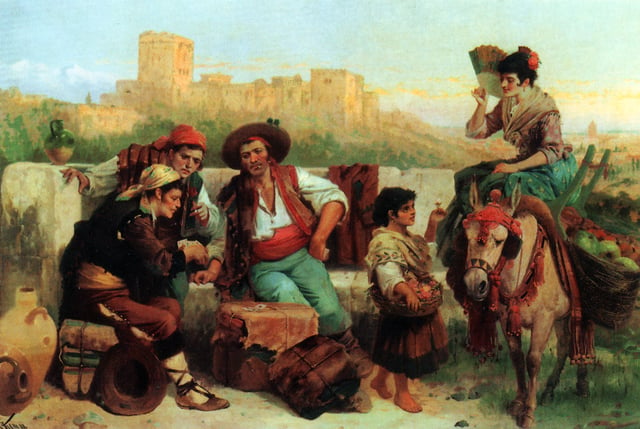
Gypsies of Granada
Spain is home to one of the largest communities of Romani people (commonly known by the English exonym "gypsies", Spanish: gitanos). The Spanish Roma, which belong to the Iberian Kale subgroup (calé
Data on ethnicity is not collected in Spain, although the Government's statistical agency CIS estimated in 2007 that the number of Gitanos present in Spain is probably around one million.[38] Most Spanish Roma live in the autonomous community of Andalusia, where they have traditionally enjoyed a higher degree of integration than in the rest of the country.
A number of Spanish Calé also live in Southern France, especially in the region of Perpignan.
Modern immigration
The population of Spain is becoming increasingly diverse due to recent immigration.
From 2000 to 2010, Spain had among the highest per capita immigration rates in the world and the second highest absolute net migration in the World (after the United States)[39] and immigrants now make up about 10% of the population. Since 2000, Spain has absorbed more than 3 million immigrants, with thousands more arriving each year.[47] Immigrant population now tops over 4.5 million.[48] They come mainly from Europe, Latin America, China, the Philippines, North Africa, and West Africa.[49]
Languages

The vernacular languages of Spain (simplified) Spanish Spanish official; spoken all over the country lang_ Basque Basque, co-official lang_ Aragonese
Languages spoken in Spain include Spanish (castellano or español) (74%), Catalan (català, called valencià in the Valencian Community) (17%), Galician (galego) (7%), and Basque (euskara) (2%).[50] Other languages with a lower level of official recognition are Asturian (asturianu), Aranese Gascon (aranés), Aragonese (aragonés), and Leonese, each with their own various dialects. Spanish is the official state language, although the other languages are co-official in a number of autonomous communities.
Peninsular Spanish is largely considered to be divided into two main dialects: Castilian Spanish (spoken in the northern half of the country) and Andalusian Spanish (spoken mainly in Andalusia).
However, a large part of Spain, including Madrid, Extremadura, Murcia, and Castile–La Mancha, speak local dialects known as "transitional dialects" between Andalusian and Castilian Spanish.[51] The Canary Islands also have a distinct dialect of Castilian Spanish which is very close to Caribbean Spanish. Linguistically, the Spanish language is a Romance language and is one of the aspects (including laws and general "ways of life") that causes Spaniards to be labelled a Latin people. The strong Arabic influence on the language (nearly 4,000 words are of Arabic origin, including nouns, verbs and adjectives.[52]) and the independent evolution of the language itself through history, most notably the Basque influence at the formative stage of Castilian Romance, partially explain its difference from other Romance languages. The Basque language left a strong imprint on Spanish both linguistically and phonetically. Other changes in Spanish have come from borrowings from English and French, although English influence is stronger in Latin America than in Spain.
The number of speakers of Spanish as a mother tongue is roughly 35.6 million, while the vast majority of other groups in Spain such as the Galicians, Catalans, and Basques also speak Spanish as a first or second language, which boosts the number of Spanish speakers to the overwhelming majority of Spain's population of 46 million.
Spanish was exported to the Americas due to over three centuries of Spanish colonial rule starting with the arrival of Christopher Columbus to Santo Domingo in 1492. Spanish is spoken natively by over 400 million people and spans across most countries of the Americas; from the Southwestern United States in North America down to Tierra del Fuego, the southernmost region of South America in Chile and Argentina. A variety of the language, known as Judaeo-Spanish or Ladino (or Haketia in Morocco), is still spoken by descendants of Sephardim (Spanish and Portuguese Jews) who fled Spain following a decree of expulsion of practising Jews in 1492. Also, a Spanish creole language known as Chabacano, which developed by the mixing of Spanish and native Tagalog and Cebuano languages during Spain's rule of the country through Mexico from 1565 to 1898, is spoken in the Philippines (by roughly 1 million people).[53]
Religion
Roman Catholicism is by far the largest denomination present in Spain although its share of the population has been decreasing for decades. According to a study by the Spanish Centre for Sociological Research in 2013 about 71% of Spaniards self-identified as Catholics, 2% other faith, and about 25% identified as atheists or declared they had no religion. Survey data for 2019 show Catholics down to 69%, 2.8% "other faith" and 27% atheist-agnostic-non believers.[50]
Emigration from Spain
Outside of Europe, Latin America has the largest population of people with ancestors from Spain.
These include people of full or partial Spanish ancestry.
People with Spanish ancestry
| Country | Population (% of country) | Reference | Criterion |
|---|---|---|---|
| Spanish Mexican | 94,720,000 (>80%) | [4] | estimated: 20% asWhites75-80% as Mestizos. |
| Spanish American | 50,000,000 (16%) | [5] | 10,017,244 Americans who identify themselves with Spanish ancestry.[55]26,735,713 (53.0%) (8.7% of total U.S. population) Hispanics in the United States are white (also mixed with other European origins), others are different mixes or races but with Spaniard ancestry. |
| Spanish Venezuelan | 25,079,923 (90%) | [6] | 42% aswhiteand 50% as mestizos |
| Spanish Brazilian | 15,000,000 (8%) | [7] | estimate by Bruno Ayllón.[57] |
| Spanish Colombian | 39,000,000 (86%) | Self-description as "Mestizo, white and mulatto" | |
| Spanish Cuban | 10,050,849 (89%) | [8] | Self-description aswhite, mulatto and mestizo |
| Spanish Puerto Rican | 3,064,862 (80.5%) | [9][59][60][61] | Self-description aswhite.83,879 (2%) identified as Spanish citizens |
| Spanish Canadian | 325,730 (1%) | [62] | Self-description |
| Spanish Australian | 58,271 (0.3%) | [63] | Self-description |
The listings above shows the ten countries with known collected data on people with ancestors from Spain, although the definitions of each of these are somewhat different and the numbers cannot really be compared.
Spanish Chilean of Chile and Spanish Uruguayan of Uruguay could be included by percentage (each at above 40%) instead of numeral size.
